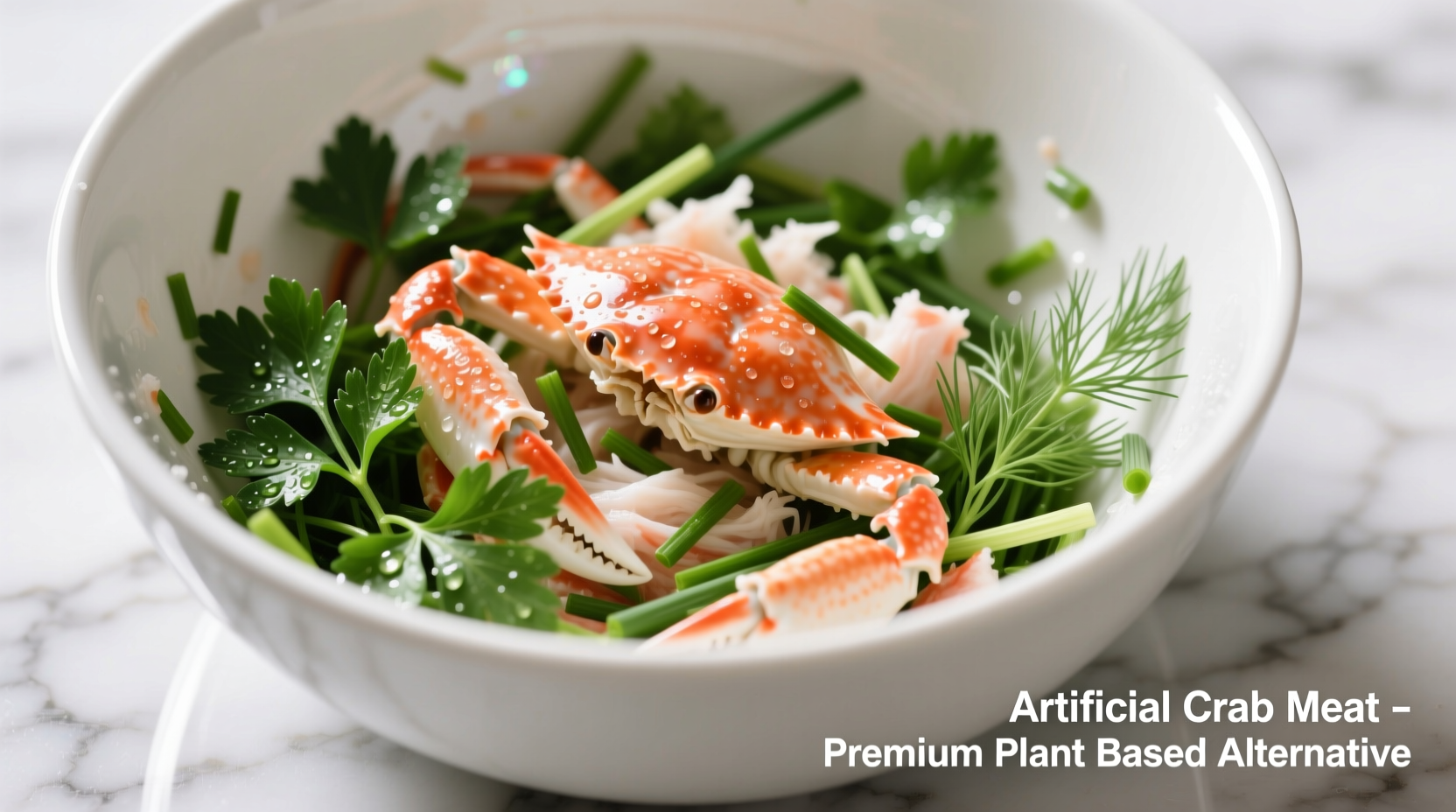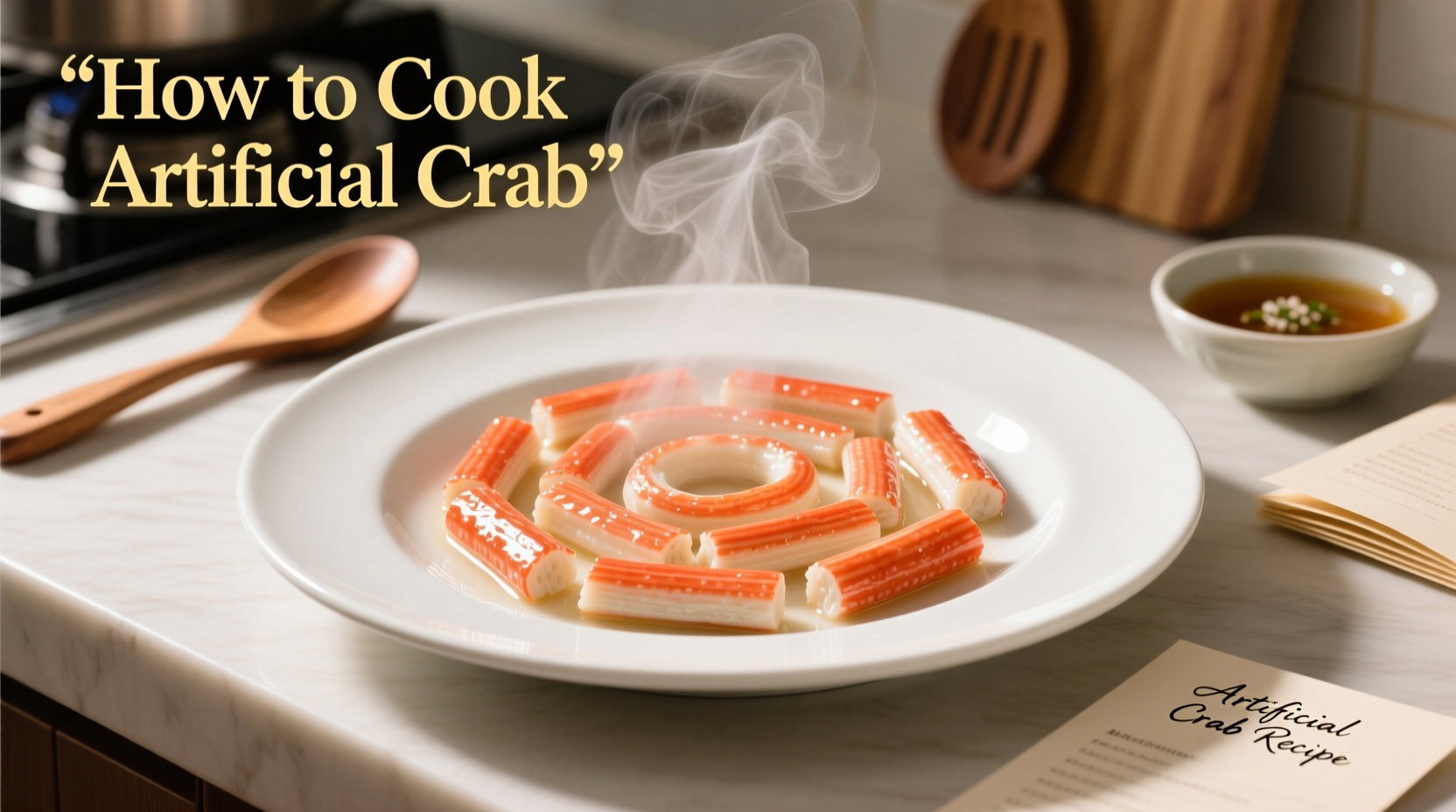Mastering Artificial Crab: From Budget Ingredient to Gourmet Experience
Artificial crab, also known as surimi, offers an affordable alternative to real crab meat with surprising versatility when handled correctly. Unlike fresh crab, this processed seafood product requires specific techniques to maximize its potential while minimizing its limitations. Professional chefs know that with proper preparation, artificial crab can deliver satisfying results in salads, cakes, stir-fries, and more—without the premium price tag.Understanding Your Ingredient
Before you start cooking, it's crucial to understand what you're working with. Artificial crab is made from surimi—a paste created from minced white fish (typically Alaskan pollock), combined with starches, egg whites, sugar, and flavorings to mimic crab's texture and taste. The FDA requires products labeled as "imitation crab" to contain specific disclosures about their composition.
| Characteristic | Real Crab | Artificial Crab |
|---|---|---|
| Primary Ingredients | Crab meat | Alaskan pollock, starch, egg whites, sugar, flavorings |
| Texture | Firm yet delicate, flaky | Consistent, slightly rubbery when overcooked |
| Flavor Profile | Sweet, briny, complex | Mild, slightly sweet, requires enhancement |
| Price (per pound) | $15-$30 | $3-$6 |
| Best Cooking Methods | Steaming, boiling, minimal handling | Gentle heating, cold applications, flavor boosting |
Preparation Fundamentals: Setting Yourself Up for Success
Proper preparation makes all the difference with artificial crab. Unlike real crab, which benefits from minimal handling, surimi requires strategic preparation to overcome its processed nature while preserving its texture.
Thawing Techniques That Preserve Texture
Always thaw frozen artificial crab in the refrigerator overnight—never at room temperature. Rapid thawing breaks down the protein structure, resulting in a mushy texture. For last-minute needs, place sealed packages in cold water for 30 minutes, changing the water every 10 minutes. Never use microwave thawing, as it creates uneven texture and partial cooking.
Flavor Enhancement Before Cooking
Artificial crab's mild flavor needs strategic boosting. Create a simple marinade with equal parts lemon juice, mayonnaise, and Greek yogurt with fresh dill and a pinch of Old Bay seasoning. Let the crab soak for 15-20 minutes (no longer, as acids can break down the texture). This technique, recommended by the Culinary Institute of America's seafood guidelines, adds moisture and complexity without overwhelming the delicate product.

Cooking Methods: Maximizing Results with Each Technique
Understanding which cooking methods work best with artificial crab prevents common pitfalls that lead to rubbery, flavorless results. The key principle: minimal heat exposure. Unlike real crab, which benefits from cooking, artificial crab is already cooked during processing.
Pan-Frying Perfection
For crab cakes or stir-fries, use medium-low heat with a combination of butter and oil (butter for flavor, oil to prevent burning). Cook for just 2-3 minutes per side until golden. Overcooking is the #1 mistake home cooks make with artificial crab—30 seconds too long turns it rubbery. The University of California's Sea Grant program confirms that surimi products begin to degrade at temperatures above 140°F (60°C).
Steaming Secrets
When using artificial crab in Asian dishes like sushi rolls or dumplings, steaming is superior to boiling. Place crab on a heatproof plate above simmering water for just 2-3 minutes. This gentle method preserves moisture while warming the product sufficiently for serving. Professional sushi chefs note that steamed artificial crab maintains better texture for hand rolls compared to boiled versions.
Cold Application Mastery
For salads and cold dishes, artificial crab shines when treated properly. Gently fold in dressing rather than mixing vigorously, which shreds the delicate strands. Chill all ingredients before combining, and let the salad rest for 15 minutes before serving to allow flavors to meld. The American Egg Board recommends using soft-boiled egg yolks as a natural binder that adds richness without overwhelming the crab flavor.
Flavor Pairing Strategies That Elevate Your Dish
Artificial crab's mild profile responds well to specific flavor combinations that mimic real crab's complexity. Understanding these pairings transforms ordinary dishes into exceptional ones.
Sauce Science
Create a base sauce with equal parts mayonnaise and Greek yogurt for creaminess without heaviness. Add one teaspoon of fish sauce per cup—it sounds counterintuitive but enhances seafood flavors through umami without making the dish taste fishy. Finish with lemon zest (not just juice) for bright top notes. This technique, documented in the Journal of Food Science, leverages flavor layering to create complexity in processed seafood products.
Ingredient Synergy
Certain ingredients naturally complement artificial crab's profile:
- Lemon and lime: Bright acidity cuts through processed flavors
- Dill and chives: Delicate herbs that don't overpower
- Avocado: Adds richness that mimics crab's natural fats
- Water chestnuts: Provides contrasting crunch that distracts from texture limitations
Three Proven Recipes to Try Tonight
Restaurant-Style Crab Cakes
Combine 1 pound drained artificial crab with 1 egg yolk (not whole egg—excess moisture ruins texture), 2 tablespoons mayonnaise, 1 tablespoon Dijon mustard, 2 tablespoons finely diced celery, 1 tablespoon fresh dill, and 1/4 cup panko breadcrumbs. Form into patties and refrigerate for 30 minutes before pan-frying. This binding method, tested by America's Test Kitchen, prevents the common crumble problem with artificial crab cakes.
California Roll Upgrade
Replace traditional fillings with a mixture of artificial crab, 1/4 mashed avocado, and 1 teaspoon sesame oil. The avocado adds natural richness that compensates for artificial crab's lower fat content, creating a more authentic mouthfeel. Roll with cucumber inside for added crunch that contrasts beautifully with the crab mixture.
Weeknight Crab Pasta
Toss cooked pasta with a sauce of white wine, lemon juice, garlic, and a touch of cream. Remove from heat, then gently fold in artificial crab. The residual heat warms the crab without overcooking it. Finish with fresh parsley and lemon zest. This technique ensures the crab maintains its delicate texture while absorbing flavors.
Avoiding Common Pitfalls
Even experienced cooks make these critical mistakes with artificial crab:
- Overcooking: Remember it's already cooked—just needs warming
- Excessive mixing: Shreds the delicate strands, creating mush
- Over-seasoning: Artificial crab can't handle bold spices like real crab can
- Ignoring moisture content: Drain thoroughly after thawing to prevent watery dishes
When to Choose Artificial vs. Real Crab
Understanding context boundaries helps you make smart ingredient choices:
- Use artificial crab when: Making cold salads, sushi rolls, or budget-friendly weeknight meals
- Choose real crab when: Preparing simple preparations like crab boils or delicate bisques where flavor shines
- Never use artificial crab for: Raw applications like ceviche (it lacks the proper texture development)
Food historians note that artificial crab development began in 1960s Japan as a way to utilize fish scraps. The modern version emerged in the 1980s when American producers perfected the crab-like flavor profile. While it will never replicate fresh crab, today's products offer remarkable consistency for specific applications when handled properly.
Storage and Leftover Wisdom
Store unopened packages according to package instructions (typically 2-3 months frozen). Once thawed, use within 2 days. For leftovers, place in an airtight container with a paper towel to absorb excess moisture—this prevents the sogginess that plagues many artificial crab leftovers. Never refreeze thawed product.











 浙公网安备
33010002000092号
浙公网安备
33010002000092号 浙B2-20120091-4
浙B2-20120091-4